You are here
Mausoleum Karakhana.
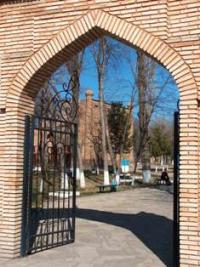
Tours in historical places of town of Taraz.
“Cities have the capability of providing something for everybody, only because, and only when, they are created by everybody”
Jane Jacobs.
Vacation packages in Kazakhstan.
One of the earliest mausoleums was the now lost Karakhan mausoleum, built in the 9th-10th centuries on the territory of the western rabad of Taraz. It was a single-chamber building of a portal-domed composition.
The development of the main facade included side ornamental paths and a U-shaped frame, covering from the heel level a vaulted niche with an entrance in the depth. The front arch of the niche is made of wedge-shaped masonry and is outlined with brick, laid flat.
The arch rested on three-quarter columns lined with paired bricks. Thanks to the excavation laid in 1961 by T.N. Senigova, a significant number of bricks with ornamental carvings were found. There are about 30 types of different patterns in the decorative facing of the main facade.
The secondary walls of the mausoleum were made of patterned geometrical masonry of paired bricks. The plastic solution of the portal and the carved decor of the Karakhan mausoleum have analogies in the memorial construction of Maverannahr in Fergana (Middle Uzgend mausoleum) and regions.
The mausoleum of Karakhan is located in the old part of the city, at the intersection of Tole bi and Baizak batyr streets, 24 near the historical core. It is located in the depths of a spacious courtyard, the "Juma-Mosque" type, typical for religious buildings of the Central Asian region.
It is located in the depths of a spacious courtyard, the "Juma-Mosque" type, typical for religious buildings of the Central Asian region. In 1998, reconstruction was carried out, the mosque was expanded due to a new extension. Only the building of 1913 is of artistic value.
A one-storey rectangular in plan, an extended volume, with a ceiling raised high on columns, is divided into the southern and northern parts. The old prayer hall in the southern part (1913) is a spacious room up to 21 m long and up to 12 m wide, in the center of the blank western wall there is a mihrab niche, the ends of the walls are cut through with high windows.
During one of the repairs, the eastern wall was opened towards the aivan, from the outside it was completely glazed. On the entire width of the hall on both sides of the mihrab at a height of 20 m, mezzanines are arranged.
The ceiling of the hall, made in a beam structure with a vass filling and painted with polychrome ornaments of geometric and plant motifs, is distinguished by a special artistic expressiveness. Now the aivan is hidden by an extension of the entrance, crowned with a dome.
The northern part (annex in 1973) was a glazed iwan with numerous columns. The mausoleum was erected over the grave of the famous khan from the Karakhanid dynasty Sha-Mahmud Bogra Karakhan. Four walls of the mausoleum and two smooth towers, except for the collapsed dome, were preserved until the 90s of the XIX century.
In 1905, the destroyed parts of the monument were removed, and in 1906, a new mausoleum was built on the site, not similar to the previous one. The construction of the mausoleum was financed by Said Bakkhanov, who was at that time the ishan of the city of Tashkent.
The new mausoleum of Aulie-Ata is four-sided, consists of a medium large room and three small ones. The ceiling of the middle room is closed like a felt yurt. There are two towers at the back. The main entrance of the mausoleum is located on the south side, the entrance door is inlaid with patterns.
The inner walls of the mausoleum are made of old bricks, from the outside, new bricks are used. He admired connoisseurs of Russian architecture with his beauty as early as 1902, as a brilliant creation of ancient Taraz.
As shown by archaeological excavations, up to 30 types of figured bricks, made with extremely high skill, were used to decorate this structure. According to one of the legends, Aulie-Ata Karakhan is allegedly a descendant of the famous Khoja Ahmed Yassavi, buried in Turkestan.
Another legend tells that the mausoleum of Abd-ar-Rahim, one of the three saints who came from Syria to Central Asia to spread Islam. Abd-ar Rahim bore the name Aulie-Ata Karakhan and he had a daughter named Aisha-Bibi.
The father was buried on the Talas River in Taraz, and the daughter was buried in two farsangs (that is, about 8 kilometers) from her father's grave. Information about the Karakhan mausoleum has come down to us in the form of a photograph of the end of the XIXth century and external descriptions of it by historians, ethnographers, and archaeologists.
During historical, archival and bibliographic research, it became clear that he was one of the outstanding creations of Central Asian architecture, and it is no coincidence that his architecture still attracts the attention of researchers.
Folk legends associate the construction of the mausoleum with the man who erected the mausoleums of Aisha Bibi and Babja Khatun. His name is not known for certain, but one thing is clear - he was the khan of the Karakhanid dynasty, which ruled in this region in X – XII centuries.
Inside the mausoleum there is a stepped tombstone. For the first time the mausoleum was investigated in detail by BP Denike and described by him in the book "Architectural ornament of Central Asia". In 1982 the mausoleum of Karakhan was included in the list of UNESCO monuments.
For the first time the mausoleum of Karakhan was investigated in detail by BP Denike and described by him in the book "Architectural ornament of Central Asia". At present, the exposition of the Museum-Reserve "Monuments of Ancient Taraz" is located in the central hall of the mausoleum, which tells about its rich past.
Since 1982, the mausoleum has been under state protection.
Geographic coordinates of the Karakhan mausoleum in Taraz: N42 ° 53'54.95 "E71 ° 23'07.00"
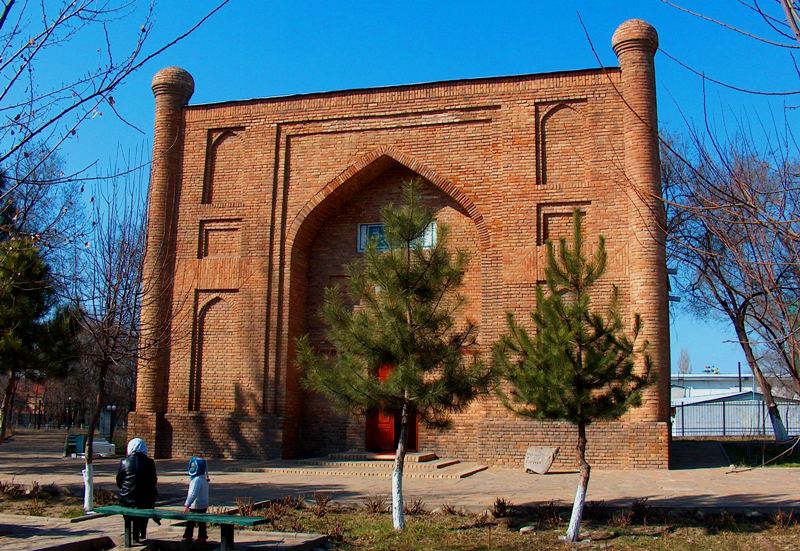
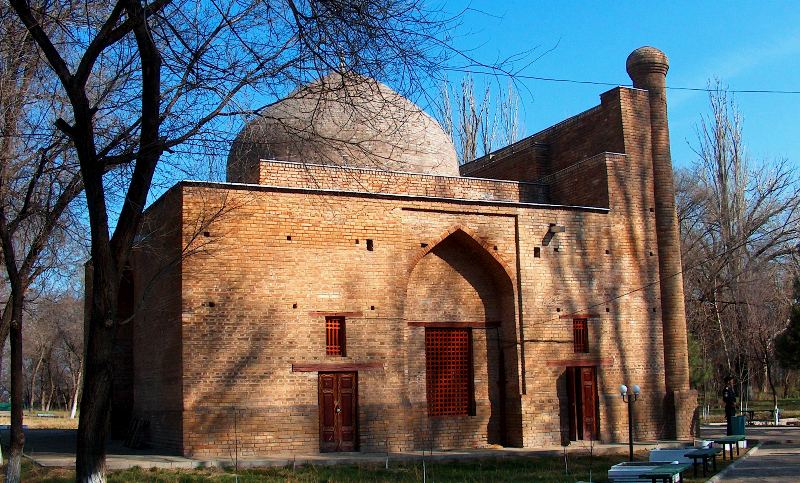
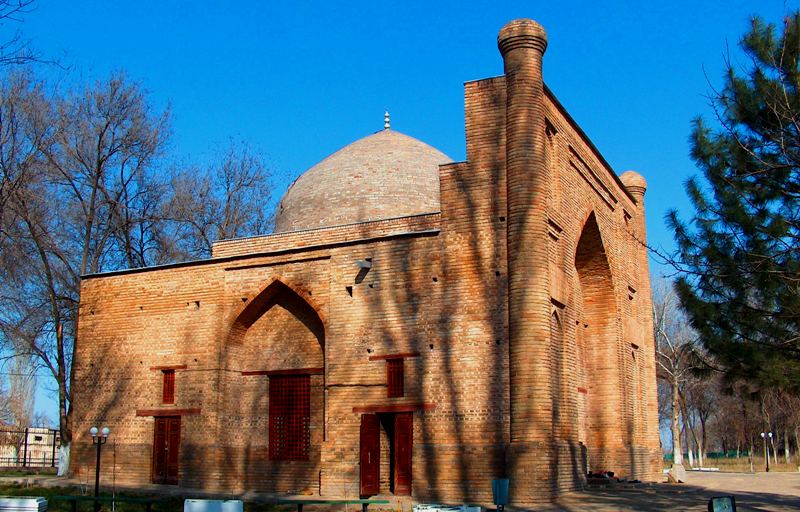
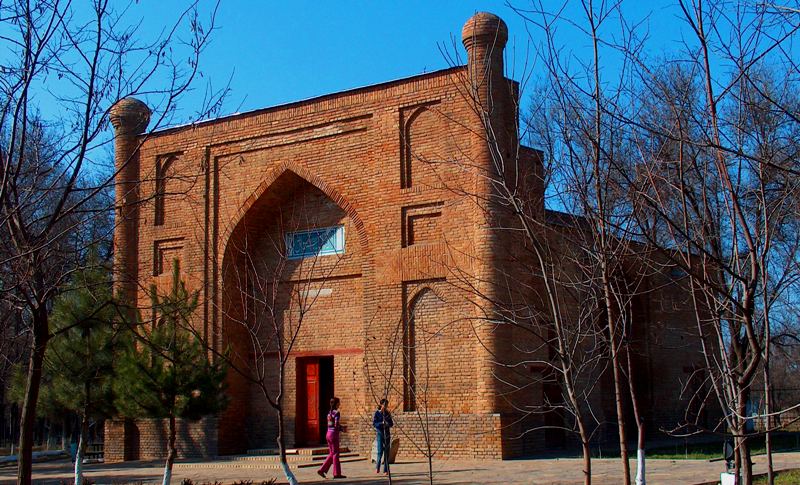
Authority:
«Monuments of the Central Asia». The author of M. Khahsimov. Publishing house, Saga, 2001.Samarkand. «Masterpieces of the Central Asia», Tashkent, Publishing house Sanat, 2004. www.farsah.kz. «Ancient Kazakhstan» Arias, Saki, Hun, Turkis. The children's encyclopedia of Kazakhstan. Almaty, 2007, publishing house Aruna. Medoev A.G., «Engravings on rocks.Sary-Arka, Mangyshlak», Almaty, Zhalyn, 1979. Marikovskij P.I. «Figures on rocks of Southern and Central areas of Kazakhstan», Almaty, Tuganolke, 2004. http://culturemap.kz
Photos
Alexander Petrov.







